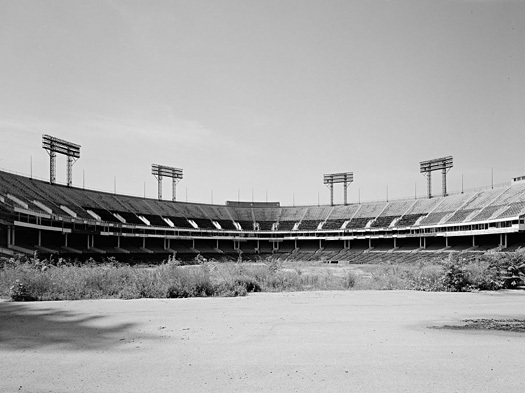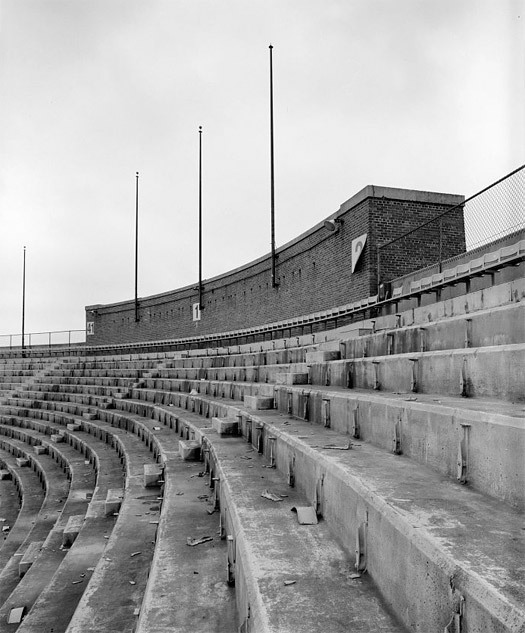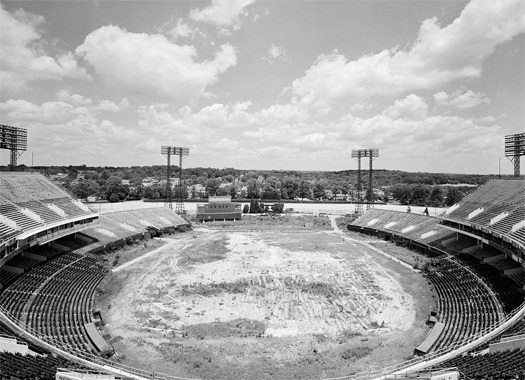By Keith Eggener (Places, 10/22/2012)

Baltimore Memorial Stadium, 1949, photographed in 2000. [Photo by the Historic American Buildings Survey]
“…Fan reaction to the threat of loss was intense and highly personal. Humanized in life, “the old gray lady” was likewise mourned in death, like a friend or family member finally laid out in the parlor where she’d long sat fading. People emphasized their connection to the place, the effect of its decay and possible destruction upon themselves, the ache they felt in watching these things occur. “You never thought you could get so attached to a building,” said one person interviewed for the documentary The Last Season, “but it’s going to be hard seeing this thing going down. … it’s like losing a friend.” “Memorial Stadium is just like a family member,” said another, “and watching it be demolished is like watching a close family member going through a long and painful death.” For still another fan the loss was like a quicker kind of death, one no less brutal or difficult to witness. “I don’t think it could be any sadder to watch someone executed. To have so many memories erased in seconds.” Memory and its erasure were often noted, and losing BMS was said by many to be like losing a part of one’s self. “It’s not just a building they’re tearing down,” one man said, “it’s memories, it’s my childhood.” [23]
In March 2001, 52 years after construction there began, Baltimore Memorial Stadium was demolished. As part of a compromise brokered by Mayor Martin O’Malley between those wanting to clear and redevelop the site and those wanting to preserve it, the memorial wall was left standing. The state of Maryland spent $750,000 to reinforce it. [24] The compromise was not a popular one.
For five months the reinforced memorial wall stood on its own, tall as a ten-story building, surrounded by roads and empty lots, disconnected from everything around it, like a defunct drive-in movie screen rising from a field of weeds and trash. Said former Baltimore Mayor and Maryland Governor William Donald Schaefer, in an opinion published in The Baltimore Sun on November 11, 2001, two months after the attacks of 9/11: “We should all be ashamed for the travesty that has been created out of the opportunity to redevelop Memorial Stadium, a monument to those who served our country in a time not unlike that which we face today…. [the wall is] a forlorn vestige of the proud landmark.” [25] Neighborhood activists saw the freestanding wall as “an incongruous eyesore without the rest of the stadium.” Veterans’ groups and the Baltimore City Council agreed and, opposition from local preservationists notwithstanding, the wall’s destruction was approved. [26] It came down just after Christmas in 2001.”
Continue reading “The Demolition and Afterlife of Baltimore Memorial Stadium” at Places, The Online Journal of Architecture, Landscape and Urbanism.


